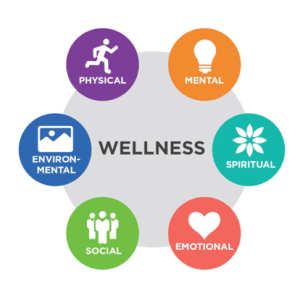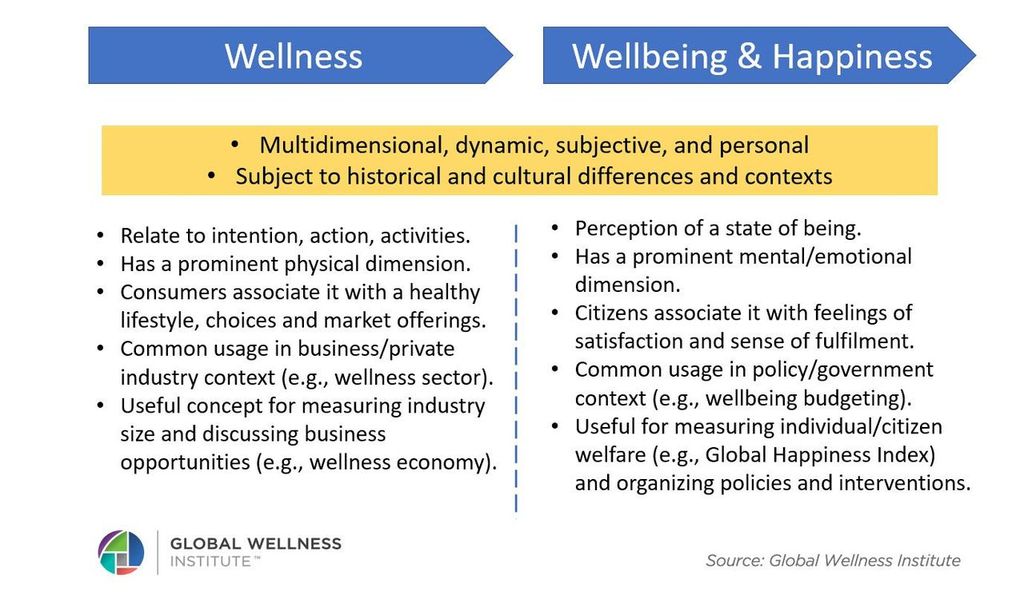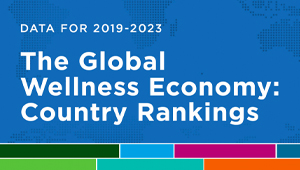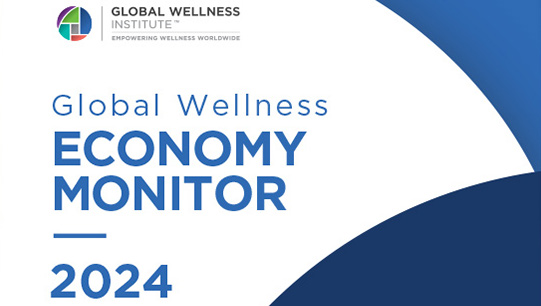WHAT IS WELLNESS?
Wellness is a modern word with ancient roots. The key tenets of wellness as both preventive and holistic can be traced back to ancient civilizations from the East (India, China) to the West (Greece, Rome). In 19th-century Europe and the United States, a variety of intellectual, religious and medical movements developed in parallel with conventional medicine. With their focus on holistic and natural approaches, self-healing and preventive care, these movements have provided a firm foundation for wellness today. Wellness-focused and holistic modalities have gained more visibility since the 1960s/1970s under the writings and thought leadership of an informal network of US physicians and thinkers (such as Halbert Dunn, Jack Travis, Don Ardell, Bill Hettler, and others). As these have evolved, proliferated, and gone mainstream, they have informed the healthy-living, self-help, self-care, fitness, nutrition, diet and spiritual practices that have become a flourishing wellness movement in the 21st century.
Join our global community to expand your knowledge and gain access to the latest wellness industry news, wellness evidence and research.
Defining Wellness
The Global Wellness Institute defines wellness as the active pursuit of activities, choices and lifestyles that lead to a state of holistic health.
There are two important aspects to this definition. First, wellness is not a passive or static state but rather an “active pursuit” that is associated with intentions, choices and actions as we work toward an optimal state of health and wellbeing. Second, wellness is linked to holistic health—that is, it extends beyond physical health and incorporates many different dimensions that should work in harmony.
Wellness is an individual pursuit—we have self-responsibility for our own choices, behaviors and lifestyles—but it is also significantly influenced by the physical, social and cultural environments in which we live.
Wellness is often confused with terms such as health, wellbeing and happiness. While there are common elements among them, wellness is distinguished by not referring to a static state of being (i.e., being happy, in good health, or a state of wellbeing). Rather, wellness is associated with an active process of being aware and making choices that lead toward an outcome of optimal holistic health and wellbeing.
Wellness Is Multidimensional
Wellness is about more than just physical health. Most models of wellness include at least six dimensions (and sometimes up to 9 or 12):

- Physical: Nourishing a healthy body through exercise, nutrition, sleep, etc.
- Mental: Engaging the world through learning, problem-solving, creativity, etc.
- Emotional: Being aware of, accepting and expressing our feelings, and understanding the feelings of others.
- Spiritual: Searching for meaning and higher purpose in human existence.
- Social: Connecting and engaging with others and our communities in meaningful ways.
- Environmental: Fostering positive interrelationships between planetary health and human actions, choices and wellbeing.
The Wellness Continuum
One way to understand wellness is to consider health as a continuum that extends from illness to a state of optimal wellbeing.* On one end, patients with poor health engage the medical paradigm to treat illnesses; they interact reactively and episodically with doctors and clinicians who provide care. On the opposite end, people focus proactively on prevention and maximizing their vitality. They adopt attitudes and lifestyles that prevent disease, improve health, and enhance their quality of life and sense of wellbeing. In other words, wellness is proactive, preventive and driven by self-responsibility. The growth of wellness is the extension of this consumer value and worldview.
Wellness is different from healthcare. Our healthcare systems use a pathogenic and reactive approach, focused on causes, consequences, diagnosis and treatment of diseases and injuries. In contrast, wellness is a salutogenic and proactive approach, focused on prevention, healthy lifestyles and the pursuit of optimal wellbeing. Ultimately, a solid foundation for wellness helps us prevent and overcome disease, both at present and in the future.

Wellness vs. Wellbeing
The terms “wellness,” “wellbeing” and “happiness” have often been used together or interchangeably by businesses, researchers and the media. This graphic outlines what they share in common and how these terms differ in concept, usage and association.

Join our global community to expand your knowledge and gain access to the latest wellness industry news, wellness evidence and research.
For more information:
- GWI’s foundational research on the concept of wellness is contained in the 2010 report Spas and the Global Wellness Market: Synergies and Opportunities. For more details, download the Full Report.
- GWI’s 2020 white paper Resetting the World With Wellness: A New Vision for a Post COVID-19 Future outlines how wellness can provide a roadmap for healing and growth as the world emerges from the COVID-19 pandemic.
Explore Wellness Industry Research




























































